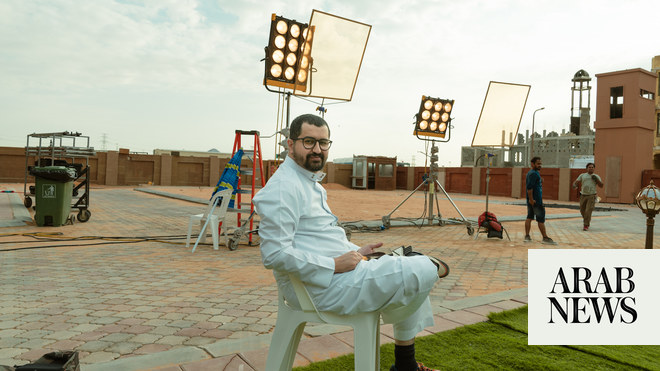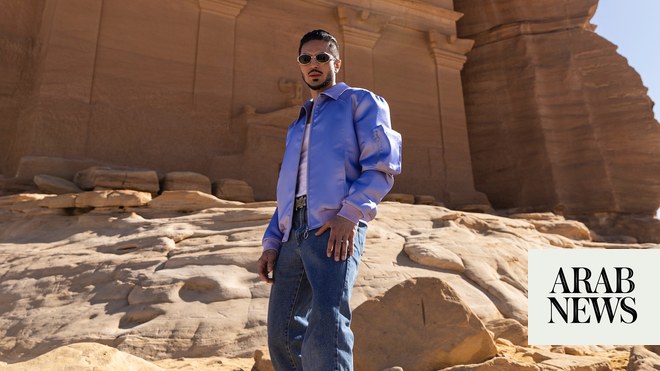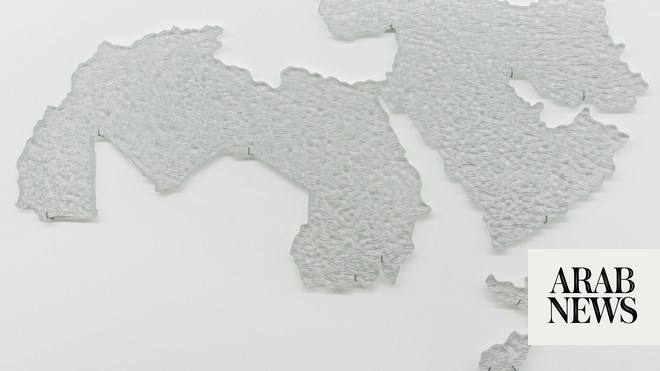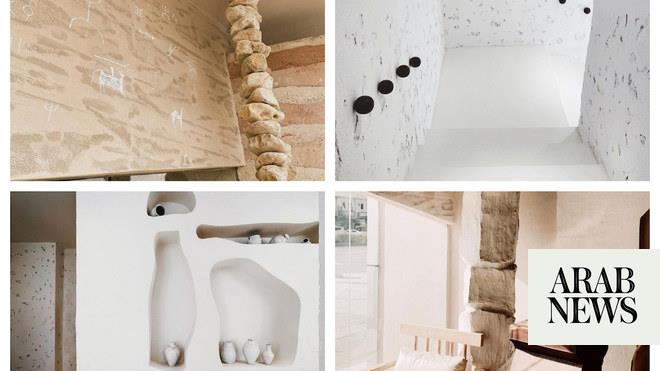
DUBAI: Interior design has a much deeper meaning for Nawaf Al-Nassar than for many others out there. For the Saudi designer, looking to the outdoors is what allows him to create the indoors.
For the latest updates, follow us on Instagram @arabnews.lifestyle
Growing up in Jeddah, Al-Nassar travelled to London for his studies, where he was mentored by design icons including Zaha Hadid, Philippe Starck and Gianfranco Ferré. “It was amazing,” he tells Arab News.
After graduating in 1990, Al-Nassar returned to his hometown to work as an interior designer, starting his studio, 3N Jeddah (the three Ns being his name, his father’s name — Nahar — and their family name). It quickly gained popularity, acquiring residential and commercial projects in Jeddah, Riyadh, Cairo, Beirut, London, Paris and the south of France.
In 2017, Al-Nassar established Tasmeem Fair — a Saudi-based art platform for young designers to showcase their creativity. The fair became an instant hit, attracting 9,000 guests in its first week alone. He describes it as “my favorite — and the best — project of my life so far.”
His family’s origins — from a small village north of Riyadh in the center of the Kingdom — played a major role in Al-Nassar’s inspiration. He remembers his grandfather taking him out into the deserted Saudi countryside as a child.
“These were our family gatherings,” he says. “When I used to look at old houses in the beautiful desert, it attracted and relaxed me. When I’d go inside old palaces or any interior space, I always felt more relaxed.
“Since I was young, I’ve always felt more like I’m talking to myself when I"m inside an interior,” he continues. “Then, when I went to high school, I always felt comfortable sitting inside a space that was complete. All of us live in an interior space, but sometimes when we look around, we don’t feel comfortable. When I’d feel that in my youth, I’d find out it was because it was not made by a designer, but by a person who has expertise with walls and ceilings. not with proportion.”
Soon after, he attended a couple of summer schools in the United Kingdom to dive deeper into the world of interior design. And his calling towards the industry only grew. “When I sit with people, I love to know their interior, the outside doesn’t mean anything to me,” he explains. “The interior is the core to know the person more. So I started wanting to know more about the interior of things, which helped me a lot with product design. I really do believe that if the interior of where a person works or lives is not reflecting their character, they can never be themselves.”
For Al-Nassar, an artist should reflect his surroundings and his feelings towards them. As such, he began infusing local Saudi motifs into his designs to pass on to generations to come. “I love the space of my studio,” he says. “It really talks to me. As an interior designer, I use soft materials for the interior, such as fabric furniture, and I deal a lot with European companies.”
Although he owns many fabrics with European motifs, he had been longing to find a Saudi designer with his own design on a fabric. He collaborated with manufacturers to print the first Saudi design on a French fabric company’s products.
“It"s very important when you go inside a space and you see details around you that reflect the surrounding of the city where you are,” Al-Nassar says. “Paris, Cairo and others have that, but in Saudi Arabia, I didn’t see any Saudi motifs, so I started to create this line of fabric design and we started manufacturing pieces.”
In May, he designed some furniture for the Kingdom’s Misk Institute. His brief was to use inspiration from a historical building in the country, so he turned to the historic Salwa Palace — the original home of the Al-Saud royal family, located northwest of Riyadh.
“I started to enjoy its smooth elements and I looked at it as an architectural designer,” he says. “It’s as if I was in an orchestra, it was like silent music and it was so beautiful to see.”
From that visit, he created “Takkei” (meaning ‘Let’s sit’), inspired by the stones that form the base of the palace. He used new material to achieve a more industrial look that he believed would be more attractive to younger generations. “It’s about speaking their language,” he explains.
Al-Nassar’s creative process happens in the outdoors. Whenever he is struggling for inspiration, he jumps in his car and drives to the mountains, two-and-a-half hours away from Jeddah. He is revitalized by the surrounding landscape and old houses, some of which date back 200 years.
“I can almost read the culture and the type of life they used to live there,” he says. “I’m definitely inspired by Saudi Arabia — but also by everywhere. You have to go to the location and smell old places to be inspired.”
He collaborated with manufacturers to print the first Saudi design on a French fabric company’s products. (Supplied)
He mentions the picturesque village of Qaryat Al-Dehin, which is made up of 49 houses built from white mountain marble and quartz. After much research, he visited with a friend who came from Qaryat Al-Dehin. Four hours of driving later, he was immersed in its beauty. He compares it to a moment when he was 16 and he and his father watched the great opera singer Luciano Pavarotti sing in Milan. “Honestly, the same feeling came to me when I looked at these 49 beautiful houses on top of this beautiful mountain,” Al-Nassar says. “It was the same energy — the same music; it was amazing.”
His passion for the outdoors has also extended to his teaching as a guest lecturer in universities. He will often take the students on field trips — something he deems vital for today’s youth. “They have to go there themselves and see the reality on the ground,” he explains. “I have done field trips everywhere in Saudi Arabia for students, and lately it has become for others as well.”
Al-Nassar sees great potential and talent in young Saudi architects and interior designers. He admires their creativity, but suggest they need the right curator.
Ultimately, he hopes such people can build a bridge between the Kingdom and the rest of the world. “Design and art are a message of peace,” he concludes. “I’m already building that bridge, and hopefully it will be finished soon.”












